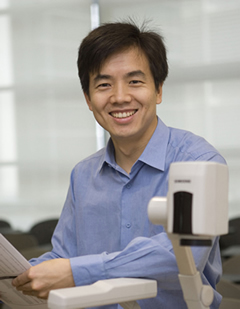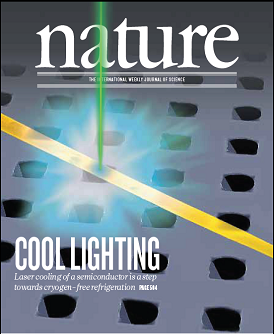Laser Cooling of Semiconductors
 | Qihua Xiong |
| Assitant Professor | |
| School of Physical and Mathematical Sciences | |
| Nanyang Technological University | |
| 报告时间:3月29日上午10:00-12:00 报告地点:教三301室 |
Optical irradiation accompanied by spontaneous anti-Stokes emission can lead to cooling of matter, a phenomenon known as laser cooling or optical refrigeration proposed in 1929 by Peter Pringsheim. In solid state materials, the cooling is achieved by annihilation of lattice vibrations (i.e., phonons). Since the first experimental demonstration in rare-earth doped glasses, considerable progress has been made particularly in ytterbium-doped glasses or crystals with a recent record of ~110 K cooling from ambient, surpassing the thermoelectric Peltier cooler. On the other hand, it would be more tantalizing to realize laser cooling in direct band-gap semiconductors. Semiconductors exhibit more efficient pump light absorption, much lower achievable cooling temperature and direct integrability into electronic and photonic devices. However, so far no net-cooling in semiconductors has been achieved despite of many experimental and theoretical efforts in the past few decades, mainly on III-V group gallium arsenide quantum wells. Here we demonstrate the first net laser cooling in semiconductors using cadmium sulfide (CdS) nanobelt facilitated by multiple longitudinal optical phonon assisted upconversion due to strong and enhanced Fröhlich interactions. Under a low power excitation, we have achieved a ~40 K and ~20 K net cooling in CdS nanobelts starting from 290 K pumped by 514 nm and 532 nm lasers, respectively. The cooling effect is critically dependent on the pumping wavelength, the blue shifting parameters and the absorption, the latter of which can be evaluated from photoconductivity measurement on individual nanowire level. Detailed spectroscopy analysis suggests that cooling to even lower temperature is possible in CdS nanobelt if thermal management is optimized. Our findings suggest alternative II-VI semiconductors for laser cooling and may find promising applications in the field of cryogenics with the advantage of compactness, vibration- and cryogen-free, high reliability and direct integrability into nanoscale electronic and photonic devices. A concept of all-solid-state cryocooler based on semiconductor nanobelt will also be presented.

Reference: J. Zhang, D.H. Li, R.J. Chen and Q.H. Xiong, “Laser cooling of a semiconductor by 40 Kelvin”, Nature, 2013 (in press, DOI: 10.1038/nature11721).







